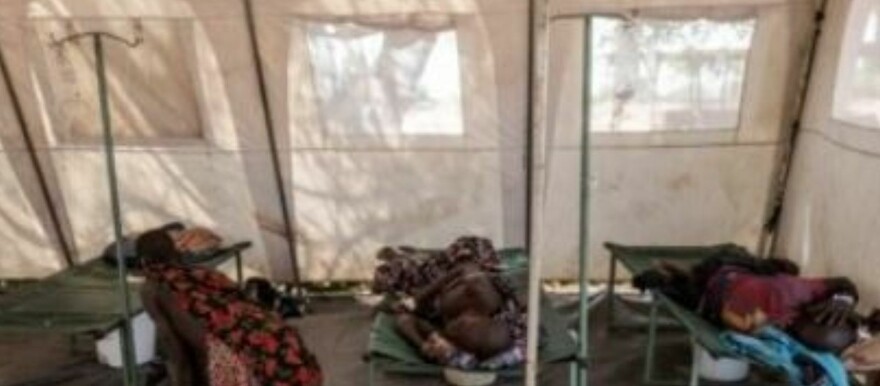At least 8,267 suspected cholera cases, including 224 associated deaths, have been reported in Sudan after the country declared an outbreak in Gedaref on 26 September.
According to a brief by the United Nations Office for the Coordination of Humanitarian Affairs, the cholera outbreak has now spread to 46 localities in nine states as of 23 December 2023.
“Humanitarian agencies are scaling up the response to the outbreak, supporting the detection and treatment of cases. They also address water, sanitation and hygiene issues, water quality monitoring and chlorination, risk communication, and community engagement,” the brief said. “Surveillance is ongoing to identify and address risk factors in affected and high-risk areas. Over 2.2 million people (98 percent of the target) were vaccinated against cholera in high-risk localities in Gedaref and Aj Jazirah.”
A planned oral cholera vaccination campaign targets 5.5 million people living in 14 localities reporting cholera cases in Aj Jazirah, Red Sea, Kassala, White Nile, Sennar, and Blue Nile states.
“At least 8,267 suspected cases of cholera, including 224 associated deaths (case fatality rate of 2.7 percent), were reported as of 23 December from 46 localities of nine states, according to the Federal Ministry of Health (FMoH) and the World Health Organization (WHO) Sudan Outbreaks Dashboard,” OCHA said.
This is an increase of about 104 percent compared to the number of cases reported on 23 November 2023. So far, there are 2,240 suspected cases and 77 associated deaths in Red Sea; 2,005 suspected cases of cholera and 49 associated deaths in Gedaref; 1,859 suspected cases and 26 associated deaths in Aj Jazirah; 1,090 suspected cases and 31 associated deaths in White Nile; 525 suspected cases and 26 associated deaths in Khartoum; 346 suspected cases and eight associated deaths in South Kordofan; 113 suspected cases and four associated deaths in Sennar; 86 suspected cases and three associated deaths in Kassala; and three suspected case in Blue Nile.
According to OCHA, the Federal Ministry of Health (FMoH) declared the current cholera outbreak on 26 September 2023 after the vibrio was isolated and confirmed while the initial suspected cases were reported from South Kordofan State on 19 July 2023. Based on the Global Task Force on Cholera Control (GTFCC) tool, it is estimated that about 46 percent (19.5 million) of the population in 51 localities of 15 states in Sudan will be at medium to high risk of cholera before the end of 2023.
A total of 3.1 million (7.3 percent of the total population) in 12 localities of six states will be at higher risk of cholera this year. Based on the average attack rate of 0.025 percent for the past five years, 77,500 cholera cases could be expected this year from the high-risk localities, of which, only 15,500 cases (20 percent) may develop severe dehydration requiring admission at cholera treatment centers.
“Overall, Sudan experienced more than 17 outbreaks of cholera and/or Acute Watery Diarrhea (AWD) over the past 50 years,” the OCHA brief stated. “Seasonal upsurges of AWD/cholera cases were experienced either during the dry season with water shortages or during the rainy season following flooding and contamination of water sources.”
Following the declaration of a cholera outbreak in Sudan in September, the World Health Organization (WHO), the UN Children’s Agency (UNICEF), and partners activated an inter-agency multi-cluster cholera action plan.
“They established national and state-level public health emergency operation centers (EOC) with the Federal and State Ministries of Health,” the brief said. “The outbreak response is organized by pillars of coordination, disease surveillance, laboratory, case management, water, sanitation and hygiene (WASH) supplies, risk communication and community engagement (RCCE), and OCV.”




